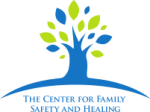Child Abuse and Neglect
The Center for Family Safety and Healing is a leader in the prevention of child abuse to support the well-being of families and create safe and thriving communities. Child abuse includes physical, sexual, verbal or emotional abuse, as well as neglect. Protecting children from abuse and neglect is a community responsibility. Most adults want to help but are unsure of how to get involved. Figuring out what to do can be a difficult and confusing process. If you think a child is being abused or neglected, you should report it as soon as you become aware of it. Do not wait, as time can make a difference! If an incident has happened within the last 96 hours (4 days), an immediate medical assessment may be necessary.
If you need to report child abuse or neglect, please call Child Protective Services in your county, for a full list, click here.
Remember to follow the three Rs – Recognize, Respond and Refer.
It is important to know that these specific indicators may or may not be present in children who have been abused or neglected. Every child is different, and children display their feelings in many ways. Children who are experiencing emotional issues, unrelated to abuse or neglect, may display some of these same behaviors. If you have questions about your child’s behavior or development, you should contact their primary care provider or pediatrician. Physicians are trained in child development, and they should be able to assist you in recognizing areas of concern.
Physical abuse is the non-accidental injury to a child. Possible signs of physical abuse are:
Physical Signs
- Unexplained or repeated bruising
- Unexplained burns
- Other unexplained or repeated injuries
Behavioral Signs
- Behavioral extremes (withdrawn, quiet, angry, and/or immature behavior)
- Excessive fear of parent(s), caregiver(s) or going home
- Unusual shyness or wariness of physical contact
- Frequent attempts to hide injuries
- Depression and/or excessive crying
- Behavioral problems, truancy and/or running away
- Substance abuse
Sexual abuse is any act of a sexual nature upon or with a child. Possible signs of sexual abuse are:
Physical Signs
- Unexplained or frequent pain, including stomach or genital pain
- Sexually transmitted diseases
- Pregnancy
- Bruises or bleeding from external genitals, vagina or anal region
- Genital discharge
- Torn, stained, or bloody underclothes
- Frequent, unexplained sore throats, yeast or urinary infections
Behavioral Signs
- Poor peer relationships or inability to relate to children of the same age
- Behaviors not common in older children, such as thumb sucking, bedwetting, or fear of the dark
- Sudden changes in behavior
- Promiscuous or seductive behavior
- Aggression or behavior problems
- Prostitution Substance abuse Avoidance of recreational activity Sleep problems or nightmares Sudden decline in school performance In young children, an above normal focus on theirs or others’ sexual organs
Neglect is the failure to act on behalf of a child. Possible signs of neglect are:
Physical Signs
- Uncleanliness, or poor hygiene, including lice, scabies, or severe or untreated diaper rash
- Untreated illness or injury
- Unsuitable clothing or missing key articles of clothing, such as socks, shoes or a coat
- Height and weight significantly below age level
Behavioral Signs
- Constant hunger, tiredness or lack of energy
- Begging or collecting leftovers
- Unusual school attendance (frequent absence, lateness, coming to school early or leaving late)
- Assuming adult responsibilities
- Vandalism or behavior problems
Environmental Signs
- Lack of food, heat or utilities in the house
- Lack of adult supervision
- Parent or caregiver does not appear to have the knowledge or skills about how to care for a child or has their own health concerns that interfere with parenting
Emotional abuse is a pattern of behavior directed toward a child that damages their emotional well-being and self-esteem. Possible signs of emotional abuse are:
Physical Signs
- Bedwetting
- Frequent illness
- Unexplained health problems, such as headaches, nausea or stomach pains
Behavioral Signs
- Behaviors inappropriate for their age
- Fear of failure, overly high standards
- Mental or emotional developmental delays
- Avoidance of recreational activity
- Changes in mood or mood swings
- Poor peer relationships or inability to relate to children of the same age
- Attention-seeking behaviors
It is important to respond appropriately to a disclosure or suspicion of abuse. Try to keep your words and body language as calm and neutral as possible. Children may feel confused, scared, sad or angry. Be supportive and non-judgmental. You can let them know that you may need to talk to someone whose job it is to keep them safe.
Don’t wait to make a call. In case of an emergency, or if a child indicates that they are afraid to return home, you should call local law enforcement immediately, or 911.
Contact your local child protective services agency to make a report. This is determined by the county in which the child resides or in which the abuse or neglect is occurring or has occurred. If an incident has happened within the last 96 hours (4 days), an immediate medical assessment may be necessary.
You should try to include the following information, although it is not required:
- The name and address of the child you suspect is being abused or neglected
- The age of the child The name and address of the parent(s) or guardian
- The name of the person you suspect is abusing or neglecting the child and the address, if available
- The reason you suspect the child is being abused or neglected
- Any other information that may be helpful to the investigation.
If you need to report child abuse or neglect, please call Child Protective Services in your county, for a full list, click here.

